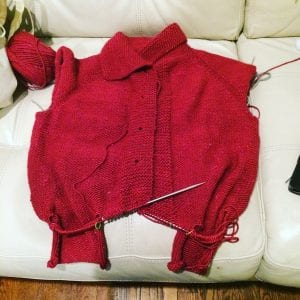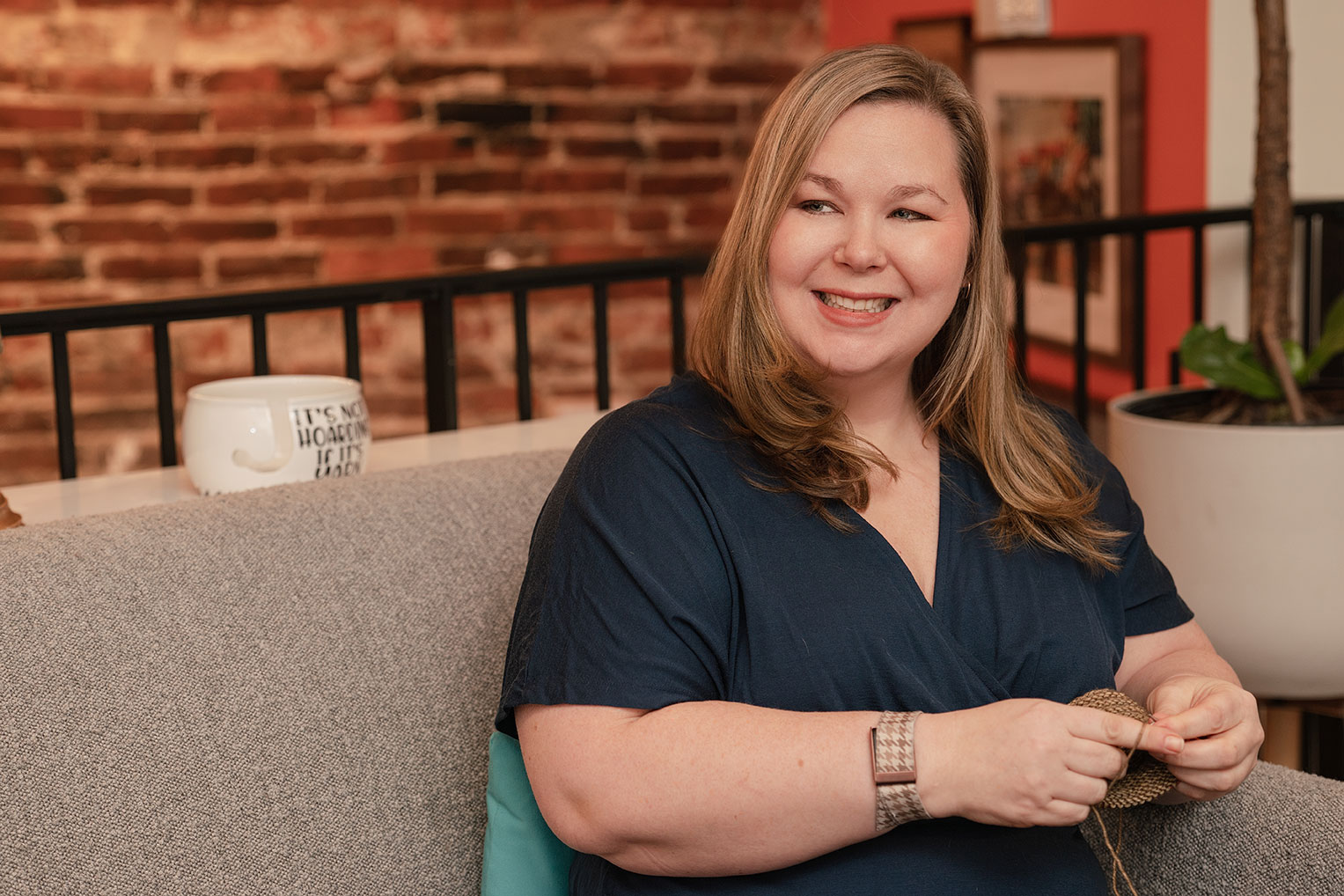 Hey everyone! Hope you had a spectacular weekend filled with knitting. I spent my Sunday making a little more progress on our Knit-a-Long, getting down to the pockets and past button hole six. My goals for this week include finishing up the hem and deciding what to do about the sleeves.
Hey everyone! Hope you had a spectacular weekend filled with knitting. I spent my Sunday making a little more progress on our Knit-a-Long, getting down to the pockets and past button hole six. My goals for this week include finishing up the hem and deciding what to do about the sleeves.
Now, some of you may be asking “what do you mean, ‘deciding‘ what to do about the sleeves? doesn’t the pattern tell you what to do?” – and you’re absolutely right. The pattern does tell me what to do. But, I think one of my favorite parts of knitting a sweater is what I like to call the “choose your own adventure” aspect of sweater knitting. Do you remember reading those mystery books of the 80’s where when you got to page 30 it asked you to decide to go through the door or walk back down the stairs? Well, unlike the mystery novels where turning to page 50 after going through the door resulted in the main character’s untimely demise – making choices about sweater knitting doesn’t have to be scary.
I will always remember my sewing teacher from high school (I took sewing as a class for four years in high school). She would impart on us with fervor at the start of every project “read the pattern from beginning to end before starting anything.” That lesson has stuck with me, and I find it to be as valuable for knitting as it was for sewing. For one, it lets you have an idea of what sorts of stitches and techniques you might need to know before casting on and getting stuck (and giving you the opportunity to search for a YouTube video or come into your LYS for some tips). Secondly, it lets you gain an understanding of how the sweater is shaped and what choices are being made by the designer about construction. And, lastly, it empowers you as the knitter to choose whether to follow those design choices or diverge from them.
How do you know if you can diverge from the pattern? Well, that question is a little bit more tricky. First, you have to ask yourself what you want to change about the sweater. Then you have to ask yourself what would it take to accomplish that change. For instance, with the Barn Sweater I’m making at least one intentional change in the pattern – possibly two. The first change you can see in the picture above. I knit the pocket linings before finishing the bottom of the sweater. The pattern asked me to knit them after the body of the sweater, and then to seam them to the inside. I decided that the change I wanted to make was to have seamless pockets, so the way I’m accomplishing this is by knitting the pockets first and then knitting (or purling, depending) the first and last selvage stitch together with the body of the sweater as I go. This was a very easy change, and involved no math. The second change I’m contemplating involves the sleeves. The pattern asks me to knit the sleeves flat and then seam them. Because this sweater is a top-down raglan, I am debating whether I would prefer to knit them in the round to have them seamless. This will involve a little thinking as I’ll have to be sure to get the proper stitch count and to adapt the decreases appropriately, but it’s nothing major.
Conversely, I had a chat with one of our fellow KAL knitters over the weekend about her sleeves. She’s knitting Demeter, and would prefer a full-length tapered sleeve. To accomplish this we had to do some math. The first thing we did was determine what she wanted to accomplish: full length (to the wrist) sleeves, tapered, with about 1-1.5″ ease. The second thing we did was measure both the circumference of the four important points on her arm – the bicep, the elbow (just above), the 3/4 length point, and the wrist – as well as the distance between each point. Then we looked at her stitch gauge and determined the amount of stitches that would need to be decreased to accomplish each measurement as she went from underarm to wrist. And, lastly, we talked about row gauge – how many rows would occur between each measurement point – so she could space out all of the needed decreases. As you can see, this alteration is more involved but not impossible. I can’t wait to see her lovely full length sleeves!
My best advice is, if you want to choose your own sweater adventure, start small and be prepared to both draw a few diagrams (I find knitters are very visual!) and do a little math. But most of all, be brave! What’s the worst thing that can happen – you might have to rip back? Carry on, fellow knitters, I can’t wait to see your sweater pics!

